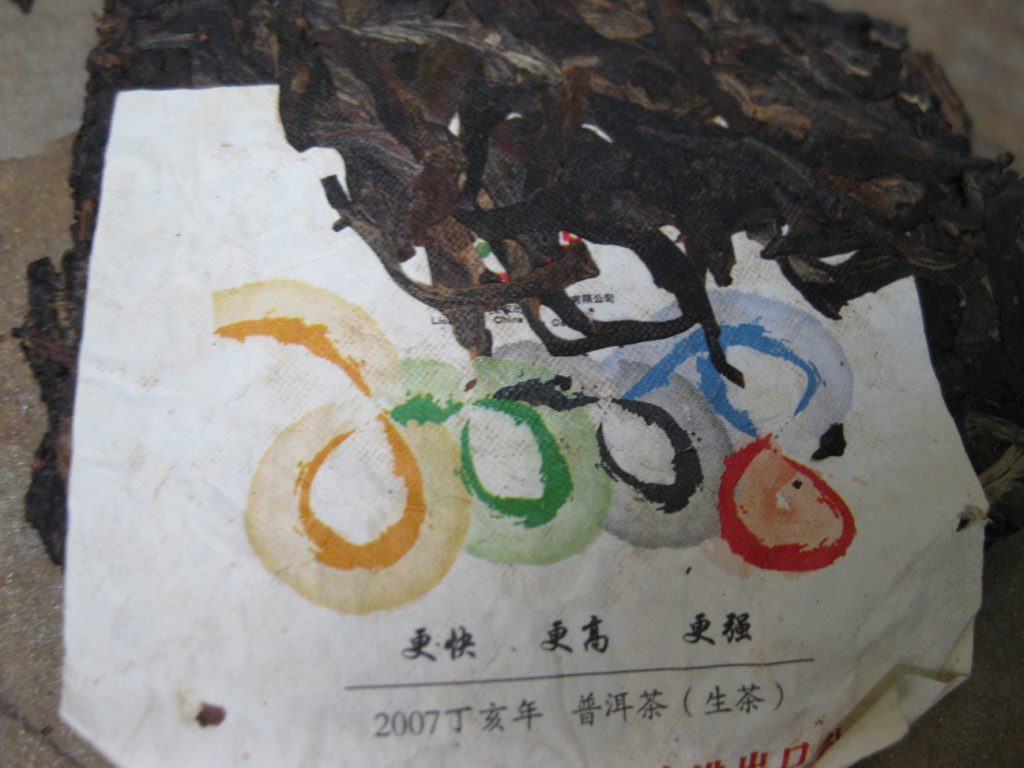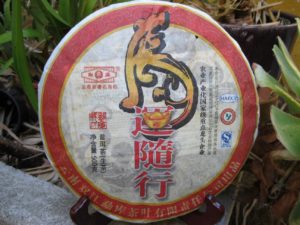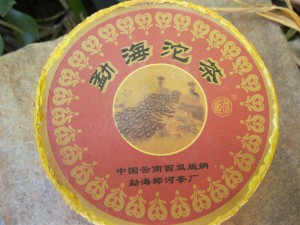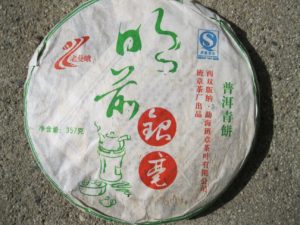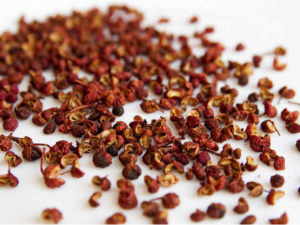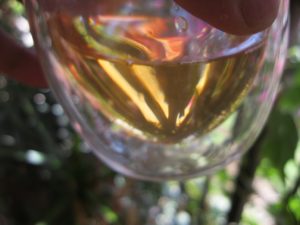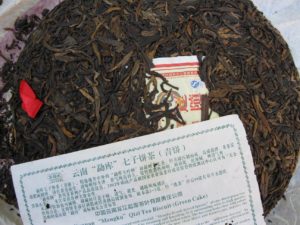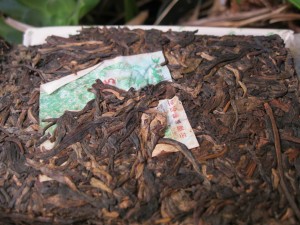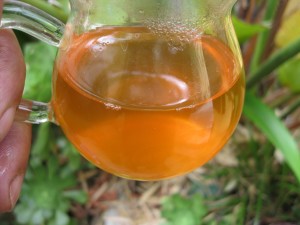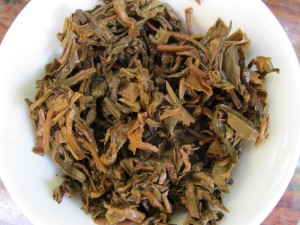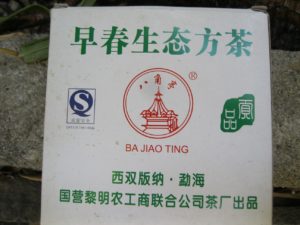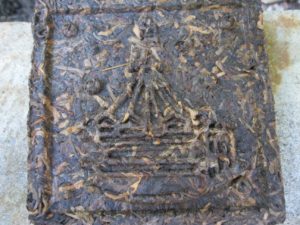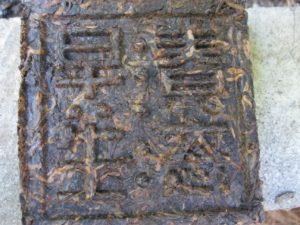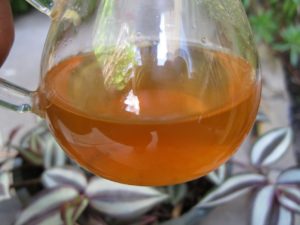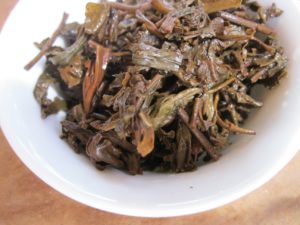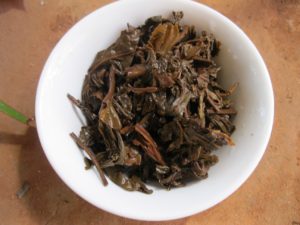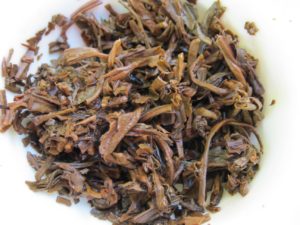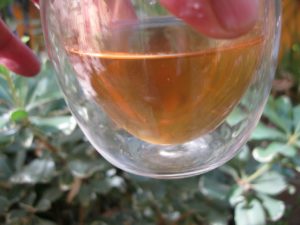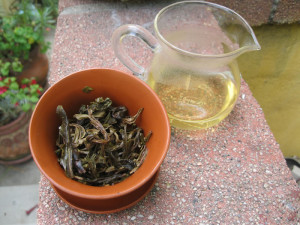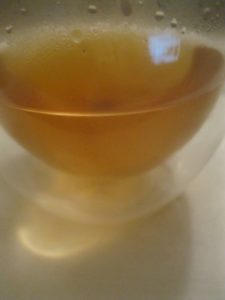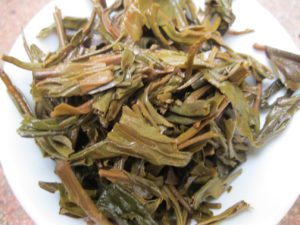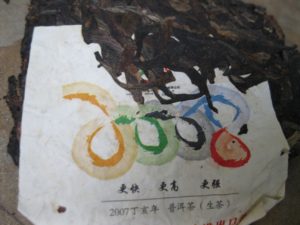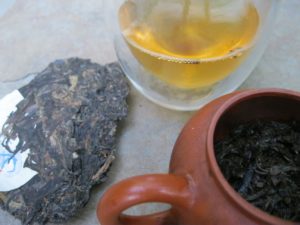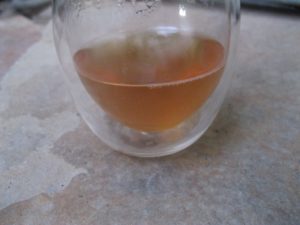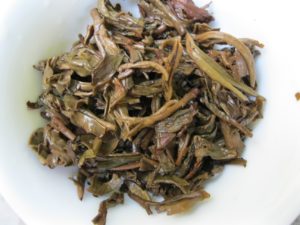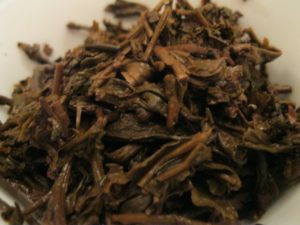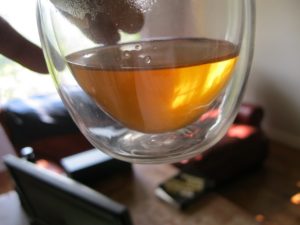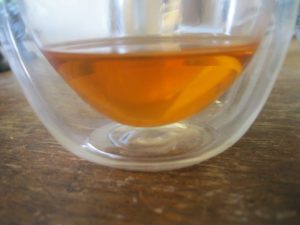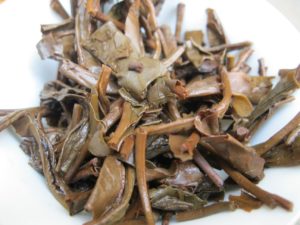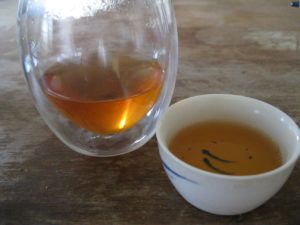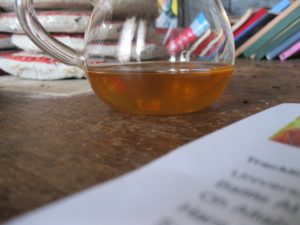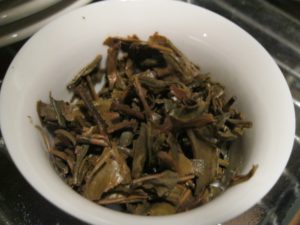Hard Pressed: Three Puerhs
Hard-pressed puerh productions require “chunking” and long infusion times. Here we are visiting three hard-pressed puerh productions that have been sampled in tandem over the course of a day or two. Here we’ll be visiting three high-compression puerhs:
- ’07 LME Early Spring
- ’07 Beijing Olympics, Zhongcha (KMTF)
- ’12 Wuliang Brick, SMTF
First, I must say that all three glimmer with clarity. Each strikes a different note. Possessing smoke, the Beijing Olympics strikes a low note relative the Wuliang and Early Spring. Still, it is not possible to speak of brightness among any or this trio.
Some may differ in this regard when it comes to the Wuliang Brick. Although the fruit notes of the Wuliang provide a measure of cheer, its complexity is greater than mere cheer. Over several brewings, I detected a cherry liqueur cough medicine taste. Infused boldly (i.e., with much time), it proves to be a challenge: bitter and aggressive. A conservative brewing of around 30s offers tastes of brandy, fermented raisins, and “purple,” a la Fago Grape Pop. The other two are far less dynamic when it comes to the effects of varied brewing times.
Hard-pressed productions are machine made. On the one hand oxidation, occurs very slowly; on the other, all the leaves are subject to great stress, i.e., cell wall breakage, upon formation. This should translate into a species of oxidation that differs from lightly or stone-pressed productions. What does it all mean?
Least pressed among the lot is the Beijing Olympics. . . and that’s not saying much. The leaves are quite indicative of the recipe productions with numbers for names. It tastes alike a variant, maybe a rougher 7532. For whatever reason, the wax taste, of which I’ve written regularly in the past, is not as prominent, though the hallmark of this particular puerh type is its wax, paraffin, kerosene, petrol.
Glass. That’s the principle association with the Early Spring. Smooth and clear. It has a deceptively potent and expansive qi and a building huigan. It presently seems to be expressing “that awkward adolescent sourness”, as one fellow drinker calls it, something that I’ve never previously noticed in this genteel and somewhat wheaty production.
All three high-compression puerhs span the range of flavour: fruit, wax, wheat and aged flowers. The main thing about tight compression is that it yields numerous infusions, at least 10. Safe for a really heavy hand, the brew turns out mellow and flavourful without excessive bitterness or astringency.

